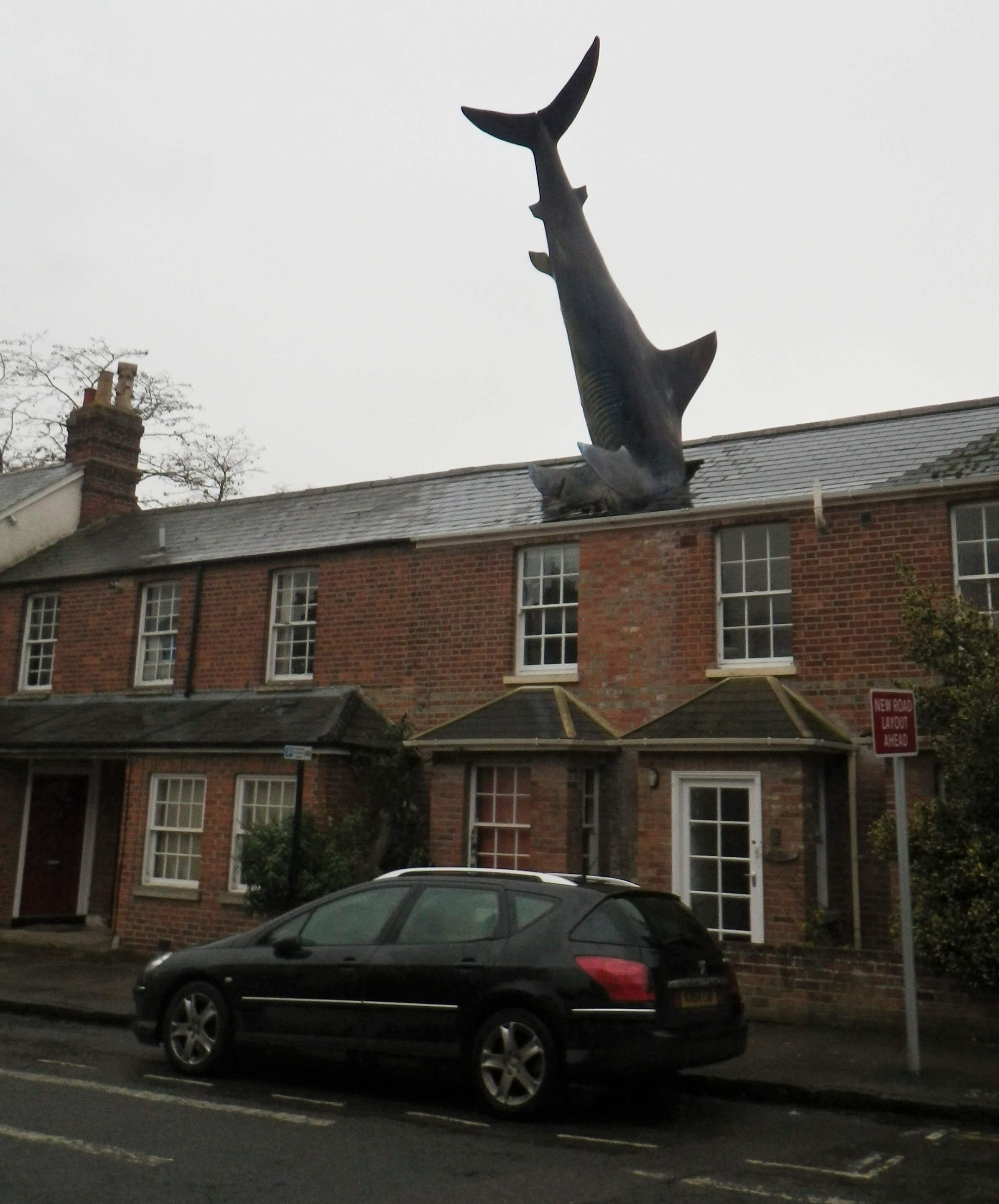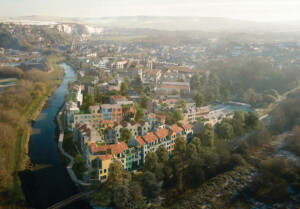The owner of a 25-foot-long fiberglass and steel shark sculpture embedded head-first into the roof of an otherwise-ordinary house in the eastern suburbs of Oxford, England, is displeased that his property was recognized by Oxford City Council as a heritage site for its “special contribution” to the community.
Headington homeowner Owner Magnus Hanson-Heine’s late father, the American-born journalist and BBC radio host Bill Heine, had commissioned the work in 1986 to relay an antiwar message inspired in part by the U.S. bombing of Libya earlier that year. Officially named Untitled 1986, the piece, created by sculptor John Buckley, was installed on the 41st anniversary of the dropping of the atomic bomb on Nagasaki, Japan, and was meant by Heine to symbolize the unfathomable shock and horror of a bomb careening into a home. Only instead of a bomb, it’s a shark.
Explains the official Shark House website:
The sculpture has the meaning that you place on it, how it strikes you, and what it brings up. The sculpture can offer an example of what happens when we suddenly find something unexpected that breaks from the normal patterns of how we imagine things to be. It might give an insight into change and the fragile nature of things that otherwise feel safe and stable, allowing us to look again with fresh eyes. Or perhaps it’s just a bit of fun.
In addition to serving as a work of protest art decrying bombing and nuclear warfare, the Headington Shark was also meant as a battle cry against censorship and the bureaucratic powers that be. Not surprisingly, the bureaucratic powers that be—namely, Oxford City Council—were none too pleased with the rubberneck-inducing sculpture after it was covertly installed without permission. What followed was a protracted planning feud between Heine and the city, which argued that the eccentric installation was unsafe (structural engineers found it posed no threat) and moved to have it relocated to a less conspicuous locale. Meanwhile, the rooftop shark sculpture had grown to become a locally beloved work of public art, putting sleepy Headington on the map. The skirmish came to an end in 1992 when Tony Baldry, a minister in the Department of the Environment, ruled that the shark could stay put.
Before his father passed away in 2019, the shark-topped house at 2 New High Street was purchased by Hanson-Heine. He currently rents it out as an Airbnb property.
Aside from the great white protruding from the roof, the property is a decidedly conventional one as far as Airbnb rentals go, described as a “large, stylish double fronted Victorian house” complete with four bedrooms, a private rear garden, and easy access to central Oxford.

As reported by the Guardian, Hanson-Heine strongly objected when learning of the city’s plans to declare his property as a protected landmark three decades after the six-year legal battle to have the sculpture removed finally concluded.
“Using the planning apparatus to preserve a historical symbol of planning law defiance is absurd on the face of it,” Hanson-Heine, a quantum chemist, is reported as saying.
Still, officials went ahead with adding the home to the Oxford Heritage Asset Register following its public nomination for protection along with 16 other local landmark sites across the country.
Although the intended antiwar message of the Headington Shark is a timeless one, Hanson-Heine noted in an interview that the sculpture holds a particular pertinency at this moment in history.
Correction: An earlier version of this article stated owner Magnus Hanson-Heine would be removing the shark sculpture because he was not happy that it had received protected status. Hanson-Heine is unhappy about the shark’s protected status but he will not be removing the sculpture.











